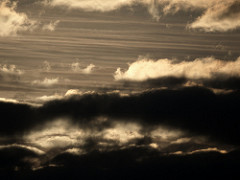Sony Vaio Z21 News:
Some good stuff to talk about since the last weekend update. Lots of activity around Z21 support in the sony-laptop platform module, enough to publish an updated 0.8 release, which Eva has done already through the usual channel. A big update patch was posted on the linux-acpi mailing list, I took parts relevant to the sony-laptop platform module, merged them into our code, fixing some bugs in the way hotkey events were mapped to input events and pushed the fixes back to linux-acpi in order to keep upstream and our version better in sync.
A couple of new features supported now, mostly about wireless kill switch and hotkeys:
- all hotkeys mapped to input events properly
- better wireless kill switch support
- compiles on 2.6.27 to 2.6.29
On special request I added a new load option to the module, if you insmod sony-laptop.ko with 'speed_stamina=3', the module will not touch the Nvidia graphics card power state any more. This is for people who need the Nvidia card so badly that booting through Windows is the lesser problem.
The Speed/Stamina switch now also reports ACPI events and I've found a way to read the switch position from the embedded controller, that means I can generate distinguishable ACPI events for either switch position.
Regarding enabling Speed mode I have been pointed to the "Nouveau" project which aims to provide a free replacement for proprietary Nvidia drivers. Maybe it's possible to reuse some code from this project to initialize the Nvidia card up to a state where a regular Xorg driver would be able to work with it. That sounds like major additional work, not sure I'll be able to do that on weekend time alone. The learning curve appears to be rather steep. However, since it's likely something that involves userspace code as well, it appears to me the correct way for now is just to report the switch position via ACPI and let userspace code handle the actual switching. Policies should not be hardcoded in kernel drivers anyway.
Digital Photography News:
After trying a Canon FD to µ4/3rds adapter from a Polish ebay seller and finding that it has got a couple of problems with infinity focusing and limits the available aperture stops to f/8, I tried to get a better version from a shop in China. It arrived on Friday a little more than a week after I ordered it and it's in a quite different arena regarding quality.
The Polish one is very simple, cut from just one block of aluminum on a CNC lathe. The adapter from China has a separate bayonet flange screwed to a CNC lathed body and also features an aperture control ring. It works correctly for all F stops and also allows infinity focusing. I'm very happy with it. I also got an almost mint 50mm f/1.4 lense for little money, including even a one year warranty against yet undiscovered defects. Both arrived in time before my easter holidays. I'll be going skiing in Italy, of course taking the camera and all lenses with me and hopefully finding enough time to enjoy both a lot.




